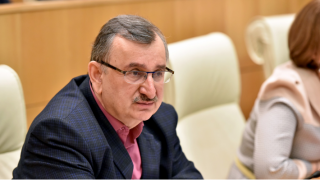Roman Gotsiridze: “Today’s inflation rate is 11.9%, a double-digit inflation. In the course of the last ten years, there has not been inflation of such a scale as compared to any month.”
Verdict: FactCheck concludes that Roman Gotsiridze’s statement is MOSTLY TRUE.
Resume:
Growing prices remains a critical problem for the population amid the pandemic. In July 2021, the annual inflation rate reached 11.9%. The inflation rate in groups of goods where the population is particularly vulnerable was higher as compared to the general inflation figure. Prices in the food and non-alcoholic beverages group increased by 14.1%. Technically speaking, the current inflation is indeed the highest in the last ten years, although there were periods with higher annual inflation rates in the last 20 years. For instance, in January-June 2011, the annual inflation rate fluctuated within the margin of 13% on average, although by the end of the year prices stabilised and the annual inflation constituted 2%. This dynamic cannot be discerned from Roman Gotsiridze’s statement. Under the United National Movement’s rule, the inflation rate reached a critical double-digit threshold multiple times and there were numerous cases when the inflation rate then was higher as compared to the current inflation figure. Therefore, high inflation is not unprecedented/highest in contemporary history and this needs to be taken into account whilst analysing the issue.
Naturally, it is still vague as to what the inflation rate would be by the end of 2021 and whether or not the annual inflation rate would be at a record high. According to the assessment of the International Monetary Fund (IMF), it is expected that the high inflation rate would be maintained until the end of the year. The IMF also adds that inflationary pressure, particularly in Georgia, is partially stipulated by the higher than expected economic growth rate-induced pressure on prices as well as by increased prices on consumer goods worldwide (World Economic Outlook). Therefore, factors contributing to the inflationary processes are partly out of the government’s responsibility, although the context of Roman Gotsiridze’s statement reflects criticism targeting the authorities.
Analysis
United National Member MP, Roman Gotsiridze, on air on TV Kavkasia, stated: ““Today, the inflation rate is 11.9%, a double-digit inflation. In the course of the last ten years, there has not been inflation of such a scale as compared to any month.”
In time, the currency’s purchasing power decreases as a result of inflation and currently one can buy less goods and services with GEL 1 than was previously possible. Consumer inflation is measured by the Consumer Price Index which includes prices in 12 large groups of goods.
In July 2021, the monthly inflation rate was 1.3% as compared to the previous month whilst the annual inflation rate reached 11.9%. However, it needs to be emphasised that the price growth in groups of goods where the population is particularly vulnerable was higher as compared to the general inflation figure which even more negatively affects people’s quality of life amid the pandemic. The yearly inflation rate in the foods and non-alcoholic beverages group was 14.1% which affected the yearly inflation by 4.43 percentage points. Prices have gone up in the following sub-groups: oil and fats (48.0%), vegetables and melons (35.4%), sugar, jams and other sweets (18.1%), milk, cheese and eggs (15.4%), bread and bakery products (12.4%), fish (11.5%), mineral and spring water, non-alcoholic beverages and fresh juices (10.4%), meat and meat products (5.3%) and coffee, tea and cocoa (4.7%). Prices in transport increased by 22.5% and by 11.4% in accommodations, water, energy and gas.
According to the information of the National Bank of Georgia, the rising inflation in Georgia is closely related to price hikes on products for mass consumption, particularly on food. It is also possible that inflation is stipulated by the higher economic growth rate. According to a preliminary assessment, the real gross domestic product (GDP) growth in June 2021 amounted to 18.7% as compared to the same period of the previous year and the economic growth rate for the first six months of 2021 is 12.7%. In accordance with the IMF’s assessment, it is indeed expected that the high inflation will be maintained until the end of 2021, although the IMF also expects the inflation to decrease in 2022. The IMF also adds that inflationary pressure, particularly in Georgia, is partially stipulated by the higher than expected economic growth rate-induced pressure on prices as well as by increased prices on consumer goods worldwide (World Economic Outlook).
Technically speaking, the current inflation is indeed the highest in the last ten years, although there were periods with higher annual inflation rates in the last 20 years. For instance, in January-June 2011 the annual inflation rate fluctuated within the margin of 13% on average. In May 2011; that is, ten years and three months before, the annual inflation rate reached 14.3%. In 2007, the annual inflation constituted 11%, although the economy increased by 12.5% simultaneously. Naturally, it is still vague as to what the inflation rate will be by the end of 2021 and whether or not the annual inflation rate will be at a record high. Of note is that on 4 August 2021, the Monetary Policy Committee of the National Bank of Georgia decided to increase the refinancing rate by 0.5 of a percentage point. The monetary policy rate was set at 10.0%.
Graph 1: Annual Inflation Rates in 2005-2021

Source: National Statistics Office of Georgia








